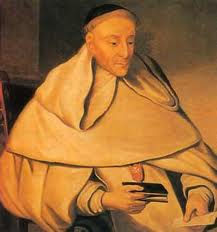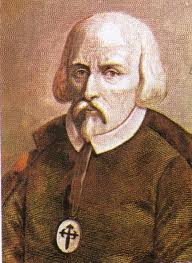Spanish Drama of the Baroque

If you happen to spend some time in Madrid, on holidays, at work, or perhaps attending one of the Spanish language schools in the city, you will walk the very streets and lanes that gave rise to the Spanish Golden Age. It is difficult to set a definite starting date to this period. Nevertheless, in terms of the Spanish theatre there is little doubt that the most significant development of the time came with Lope de Vega's invention of the nueva comedia.
Consciously and intrepidly going against the Aristotelian precepts of classical drama, Lope de Vega adapted his productions to the tastes of his time and the specific needs of his audience, incorporating much action into his plots and a wide use of technological resources in his structures to allow for plenty of special effects on the stage.
Unlike the unitary structure of the ancient Greek tradition, Lope de Vega advocated for a dramatic period that spanned up to three days and that continuously wove comic and tragic elements into the scenes. As a matter of fact, Lope de Vega's comedies provide a perfect illustration of the realities of the Spanish Golden Age, in that they offer an emotional roller coaster filled with the twists and turns, both metaphorical and literal, to which his audience could most comfortably relate.
Golden Age
Known in Spain as the siglo de oro, the Golden Century or Spanish Golden Age actually lasted quite a lot longer that one hundred years. Just how much longer is up to debate, but it was certainly long enough to span the work of Tirso de Molina, the pseudonym under which Fray Guillermo Téllez wrote, becoming one of the most prolific, respected and successful playwrights of his time.

Half a generation younger than Lope de Vega, the lessons of his mentor's art were well digested by the time Tirso de Molina broke into the scene. But his was not merely an imitative craft. On the contrary, while his most recognised creations are, in fact, comedies, he is attributed with developing a number of traits that set him apart from Lope de Vega and that took Spanish theatre to the next stage.
One such trait is the intricacy of his comic plots, where increasingly confusing circumstances combine to create unlikely situations that tend to fall on the hilarious side of plausibility. Indeed, in a good number of his plays Tirso de Molina unwinds extravagant plot which are often hard to follow. Because, if Lope de Vega appealed to action and technology, Tirso de Molina is more interested in doubling up, in the art of deception, in transgender interactions and queer solutions, often set in his hometown, Madrid.
Tirso de Molina is famous for the strength and craftiness of his female characters, as well as for his irresistible humour. He is credited with popularising the resource of cross-dressing as a means of feminine disguise in Spanish theatre, an effect often exploited by Shakespeare in England. But most of all, Tirso de Molina will always be remembered for fashioning the Spanish character par excellence: Don Juan.
Ironically, after the emergence of the third great writer of the Spanish Golden Age, Calderón de la Barca, Tirso de Molina was almost forgotten by the literary establishment. It would not be until the middle of the XIX century that he would re-claim his place among the greatest playwrights in Spanish theatre, and indeed, in western theatre at large.

Which takes us to the final representative of the Spanish Golden Age: Calderon de la Barca. Now, if it is true that the siglo de oro is long enough to embrace Lope de Vega and Tirso de Molina, it is also true that by the time of Calderon de la Barca's death, in 1681, the apogee of the Spanish Empire and its dominance over world affairs was well gone.
It is only bearing this in mind that we can fully understand the dramatic shift in tone and even on the thematic approach that Calderon de la Barca gives to his oeuvre, in comparison to Lope de Vega's or Tirso de Molina's. Pensive, meditative and often lugubrious, there is a sense of fatality in Calderon de la Barca that cannot be detected in the other two. A sense that makes him turn away from the banality of simple humour (Tirso de Molina) or even more refined wit (Lope de Vega) to favour philosophical meditation instead.
And yet, Calderon de la Barca's theatre can only belong to his time. It is clearly representative of his society, a society that is more aware of the fragility of its position but that remains obsessed with the nature of power, with the limitations of mankind and deeply pious in its forms - a society, after all, that has lost its taste for the trivial but that remains embedded in the aesthetic, the sensibility, of the Baroque: the Spanish Golden Age.
